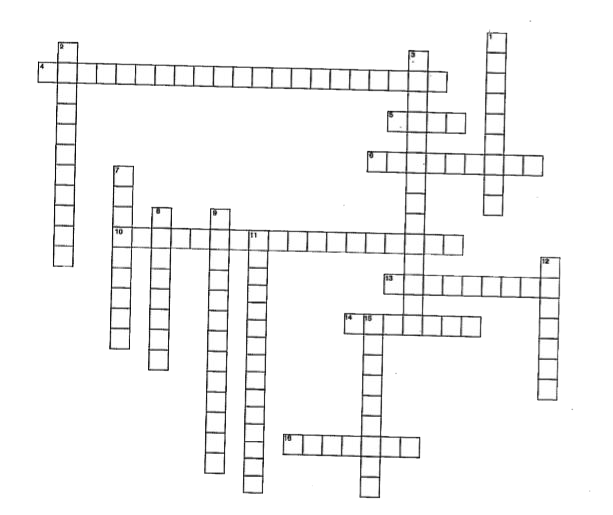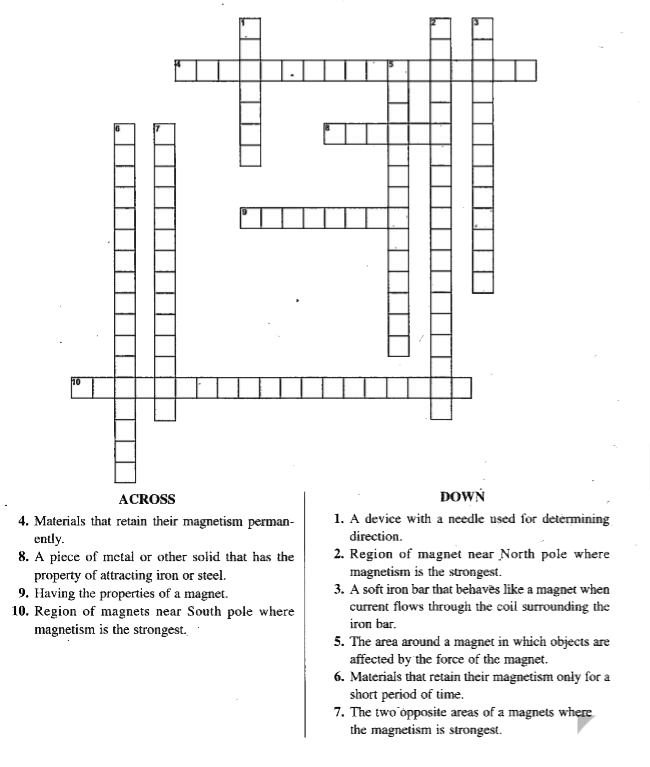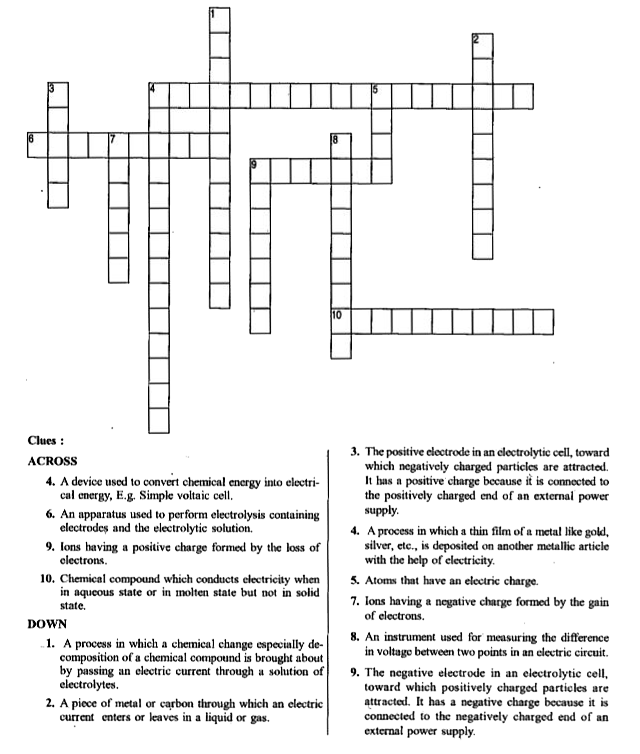Solve the following crossword with the help of the given clues :

Clues :
ACROSS
4. A list of metals arranged in order of their decreasing order.
5. Liquid hydrogen used as a _____ in rockets.
6. A chemical reaction involving removal of hydrogen or addition of oxygen.
10. High temperature flame produced by burning hydrogen in oxygen. Used for cutting and welding metals.
13. An isotope of hydrogen whose nucleus has one proton and one neutron. Also called heavy hydrogen.
14. A radioactive isotope of hydrogen whose nucleus has one proton and two neutrons.
16. The most abundant isotope of hydrogen. Its nucleus consists of a single proton. It does not have any neutron and its atomic mass is 1.
DOWN
1. Discoverer of hydrogen gas.
2. Water formed of oxygen and deuterium. It is like ordinary water but has higher freezing and boiling points.
3. A substance which can remove oxygen from a compound.
7. Scientist who gave hydrogen its present name.
8. A colourless, odourless and tasteless gaseous element that is the lightest and most abundant element in the universe.
9. Solidification of liquid vegetable oils by combining them chemically with hydrogen gas.
11. Reactions in which oxidation and reduction always occur simultaneously.
12. Gas produced by the action of hydrogen with nitrogen gas in the presence of iron as a catalyst.
15. A chemical reaction involving removal of oxygen or addition of hydrogen.
Text Solution
|
Topper's Solved these Questions
- HYDROGENBOOK - S CHAND IIT JEE FOUNDATIONCHAPTER - HYDROGENEXERCISE - QUESTION BANK (true or false)
18 Videos
- HYDROGENBOOK - S CHAND IIT JEE FOUNDATIONCHAPTER - HYDROGENEXERCISE - QUESTION BANK (Fill in the blanks by choosing the correct answer from the given alternatives)
9 Videos
- HYDROGENBOOK - S CHAND IIT JEE FOUNDATIONCHAPTER - HYDROGENEXERCISE - SELF ASSESSMENT SHEET
28 Videos
- COMBUSTION AND FLAME BOOK - S CHAND IIT JEE FOUNDATIONCHAPTER - COMBUSTION AND FLAME EXERCISE - Self Assessment Sheet-17(Fill in the blanks)
22 Videos
- METALS AND NON METALSBOOK - S CHAND IIT JEE FOUNDATIONCHAPTER - METALS AND NON METALSEXERCISE - SELF ASSESSMENT SHEET
49 Videos
Similar Questions
Knowledge Check
Arrange the following in decreasing order of heat of hydrogenation :
 AP>Q>R>SBS>R>Q>PCQ>P>S>RDR>Q>P>S
AP>Q>R>SBS>R>Q>PCQ>P>S>RDR>Q>P>SArrange the following in decreasing order of heat of hydrogenation :
 AP>Q>R>SBS>R>Q>PCQ>P>S>RDR>Q>P>S
AP>Q>R>SBS>R>Q>PCQ>P>S>RDR>Q>P>SOn burning hydrogen in air the colour of flame is
AgreenBlight bluishCyellowDnone of these
Liquid hydrogen is used as a ____ in rockets.
View SolutionSolve the following crossword puzzle with the help of the given clues :


View SolutionOn burning hydrogen in air the colour of flame is
View SolutionWhat is the chemical process that involves the addition of oxygen or the removal of hydrogen called?
View SolutionOn burning hydrogen in air the colour of flame is
View Solution



